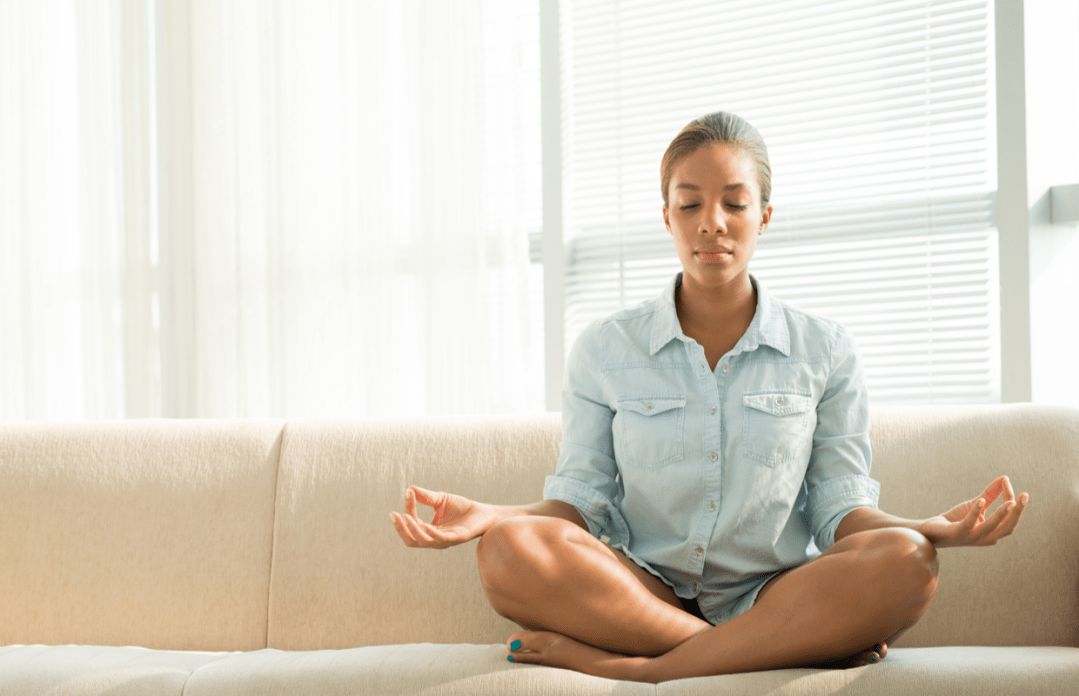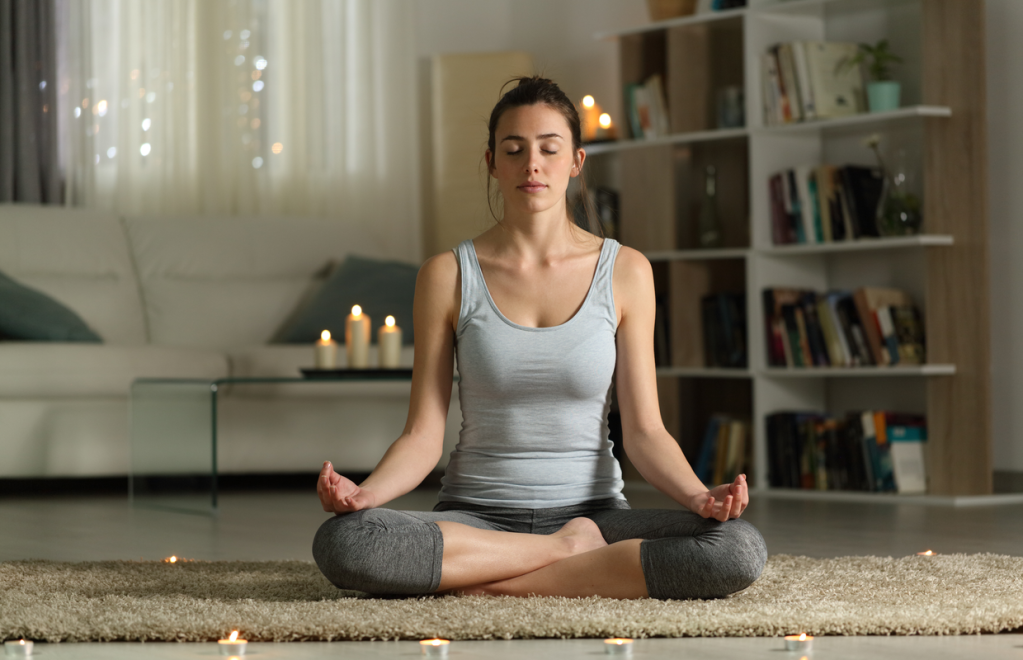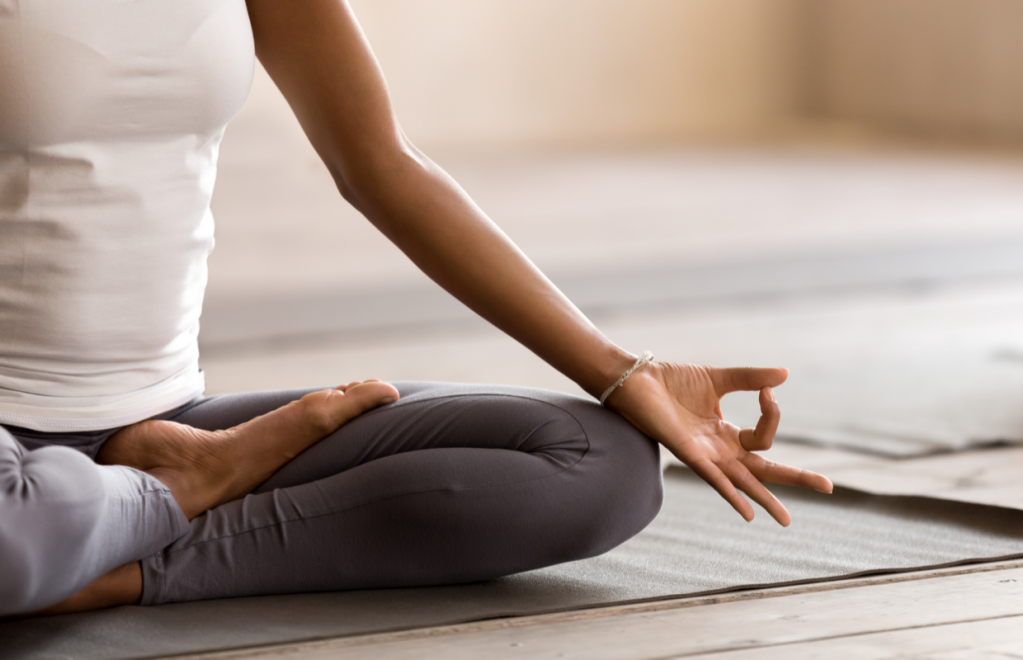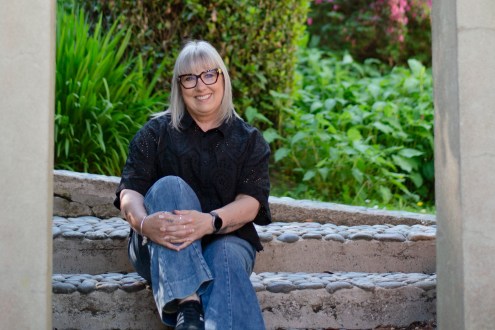Mantra meditation for anxiety: how to find clarity and control
Discover the benefits of mantra meditation for anxiety, before learning how to find your own mantra...

Harmonise with the world around you and tap into calm, clarity and control. Alexandra Massey explores the art of mantra meditation for anxiety…
We all know how hard pandemic life has been. For many people, it has involved the frantic juggle of work deadlines and home-schooling; for others, isolation from friends; and, for some, a return to a box bedroom at a parent’s house, due to a change in circumstance – all of which have led to a collective increase in levels of stress and anxiety.
The past two years have seen the number of people suffering emotionally rocket, with women in particular bearing the brunt. But if one good thing has come out of all this, it’s that we’re finally beginning to talk about it.

Opening up about our anxieties
Celebrities from Selena Gomez to Miley Cyrus and Lady Gaga have shared their mental health concerns on social media sites, laying their problems bare for all the world to see, with Kendall Jenner recently revealing, ‘I have such debilitating anxiety because of everything going on that I literally wake up in the middle of the night with full-on panic attacks.’
While many women have turned to medication, others are following the advice to get more exercise and spend time in nature, or to practice mindfulness and focused meditation. But all this is easier said than done. What if you’re one of those women who finds it hard to sit still, gets distracted by her own thoughts (or ever-growing to-do list) and, really, just doesn’t have time?
In an effort to find effective ways to manage anxiety and feel more in control, why not consider adding a new tool to your mental health toolbox – like the healing power of mantra meditation for improved wellbeing…
What’s a mantra?
A mantra is a short phrase designed to generate powerful sound waves to promote calmness, clarity, healing and spiritual growth. It comes from the ancient Vedic tradition of India, and is part of a practice known at transcendental meditation.
It’s a Sanskrit sound, and Sanskrit is the language closest to our own human sound vibration. When you are happy and healthy, you are vibrant. Your vibration harmonises with other life vibrations and you feel more at one with life and the world around you.
Remember that moment when everything lined up in harmony: your finances stabilised, your body felt good and the kids were happy and healthy? That’s when you experience the magnificence of the universal symphony, a sense that all is well in the world and nothing outside yourself needs to happen for you to feel it.
If, however, your vibration becomes distorted and you feel out of sorts and your life seems unbalanced, it can lead you to feeling anxious or stressed. There are many types of sound used in healing. Think Tibetan singing bowls, binaural beats, chanting, sound baths, bells and drums.

Tuning into your vibration
It could be said that everything in life is, at its purist level, vibration. Every person, plant, tree, atmosphere, and even all the parts of your body, have their own unique vibration. Even the qualities you express in your life, such as happiness, joy, abundance and love, are vibrations.
Repeating your mantra brings you into harmony with this universal vibration. Dr Elizabeth Young, a GP in North London, explains: ‘I’ve been recommending transcendental meditation to patients since 1984.
‘It gives people access to a state of rest, so that healing can occur on a deeper level. Anxiety reduces and people are able to make better use of therapy. I have found that people are able to reduce medication if they practice the technique twice daily,’ she adds.
Meditation for anxiety: how to find your mantra
Seek the advice and guidance of a transcendental meditation teacher, or try creating your own unique mantra for anxiety…
Working with a teacher
When you are taught to meditate by a teacher, your mantra will be given to you, whispered by the teacher, as if you’re receiving the secret gift of the universe. It’s plucked from thousands of others as ‘the one’ that best suits your personality. Once you’ve received it, you’ll then be taught how to use it.
There’s something in the sanctity of being taught to meditate by a teacher who’s been instructed by one of the great Indian sages. The way it’s passed on to you suggests you’re part of a ritual that has been thousands of years in the making, and you’re being held in a divine space.
Finding your own voice
But you can also go it alone and seek out the mantra that feels just right for you. There’s said to be millions of mantras, each one owning a unique vibrational quality that works for a specific personality type.
In his book, Healing Mantras: Using Sound Affirmations For Personal Power, Creativity, And Healing, author Thomas Ashley-Farr and explains how you can find your own mantra for everything, from overcoming fear, controlling stubborn habits to finding inner peace. There is no ‘best’ mantra but here are a few great examples that have that perfect vibrational quality…

Best mantras for anxiety:
OM: The most sacred mantra is the Hindu syllable ‘Om’, pronounced ‘aum.’ It’s said to be the sound that’s created the entire universe, and consists of all the positive vibrations that have the power to dismiss the negativity of the universe. When you recite it over and over, it pushes out a wave of positive energy and you can feel its calming and magnetic effect.
AIM: This mantra is said to invoke the goddess of knowledge, Saraswati.
SHREEM: This mantra is used to invoke the goddess of wealth, Lakshmi.
SO HUM: This mantra means ‘I am’ and is perfect for raising the vibration of self-love.
If, for whatever reason, you’d rather not use one of these traditional mantras, you can also establish your own, specifically to reduce anxiety. Some examples are:
IN THIS MOMENT, ALL IS OK: This will comfort the part of you that holds the anxiety, your more vulnerable self, which seeks reassurance and comfort.
I AM LOVED: By repeating this mantra, you are acknowledging your own self-love, which will awaken the part of you that’s searching for support.
I AM SAFE: By repeating this mantra with the breath, you will activate the parasympathetic nervous system, which will bring down your anxiety. Say ‘I’m’ on the in breath and ‘safe’ on the out breath.
Benefits of daily mantra meditation for anxiety:
Practicing a daily meditation with your mantra beckons a loving and supportive best friend into your life. You’ll find yourself naturally wanting to return to it, over and over, until it becomes your spiritual rock, centring and calming you through your personal rough and tumbles.
You may find yourself looking forward to stepping into the quieter, calmer levels of your mind, or even repeating it during the day to quieten your racing thoughts.

How to practice your mantra meditation
The best way to start your practice is to set aside a few minutes each day. It may be difficult at first, so keep it short – 5 minutes is manageable. Put a timer on your phone so you don’t have to think about it.
- Close your eyes and take a moment to settle.
- Notice how thoughts effortlessly come into your mind.
- With the same effortlessness, think the mantra and repeat it gently.
- When thoughts come, bring your attention back to the mantra.
- Repeat this for 5 minutes.
- Sit quietly for 30 seconds at the end.
Getting started with mantra meditation: 4 top tips
- Don’t worry if thoughts interrupt your mantra – simply bring your attention back to the mantra when you notice them.
- Don’t try. In the same way that thoughts come without effort, allow the mantra to.
- Feel the vibration and sound of the mantra, not just the word. It’s normal for the mantra to gradually change into a sound.
- When your mantra feels like it brings you into a beautiful connection with a higher source, you’ve found the right one.
Words: Alexandra Massey | Images: Shutterstock









